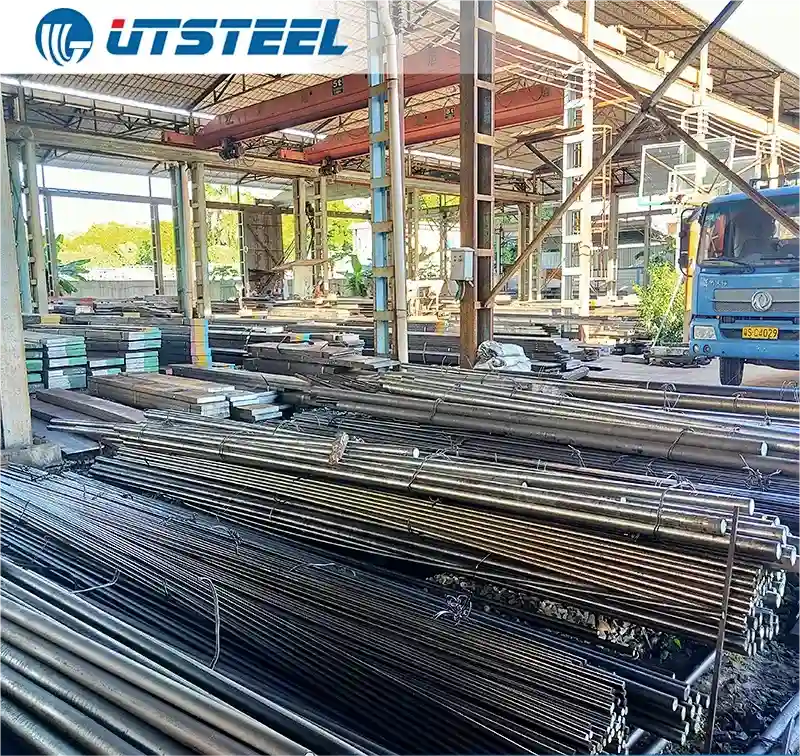Plastic mould steel is the cornerstone of modern manufacturing, essential in the production of countless plastic items that shape our daily lives. Yet, despite its ubiquity, it is often overlooked outside of industry circles. The evolution of plastic mould steel is a testament to the advances in manufacturing technology and material science, reflecting the broader trends in industrial innovation.In this article, UTSTEEL delves into the transformation of plastic mould steel, exploring its historical development, technological advancements and supply chain position.

The Historical Context of Plastic Mould Steel
The origins of plastic mould steel are closely tied to the rise of mass production in the early 20th century. As industries moved from artisanal manufacturing to large-scale production, the need for more robust materials became apparent. Traditional tool steels, while sufficient for metalworking, struggled with the demands of plastic injection moulding. This process, which involves injecting molten plastic into a mould to form a specific shape, requires materials that can withstand high pressures, temperatures, and repetitive stress without degrading.
In response, engineers and metallurgists began developing specialized steels specifically for moulding applications. Early plastic mould steels were simple modifications of existing tool steels, but as the technology of plastic injection moulding evolved, so too did the steel used to create the moulds. By the mid-20th century, plastic mould steel had become a distinct category of steel, optimized for the unique challenges of plastic production.
These early steels laid the groundwork for the advanced plastic mould steels we use today. Over the decades, continuous improvements in alloy composition, heat treatment, and machining processes have transformed plastic mould steel from a niche material into a highly specialized and indispensable component of the manufacturing industry. Understanding this historical context helps appreciate the material's critical role in the evolution of modern manufacturing.
Innovation of Plastic Mould Steel in Manufacturing Processes
Plastic mould steel has not only adapted to the demands of manufacturing processes but has also driven innovation within the industry. The introduction of computer-aided design (CAD) and computer-aided manufacturing (CAM) in the latter half of the 20th century marked a significant leap forward. These technologies allowed for greater precision and complexity in mould design, enabling the creation of more intricate and detailed plastic parts. However, these advancements also placed new demands on the steel used to create moulds.
Plastic mould steel had to evolve to meet these demands, offering not just durability but also machinability and precision. The material needed to be tough enough to withstand the pressures of injection moulding while still being workable enough to achieve the exacting tolerances required by modern designs. This balance between strength and machinability became a key characteristic of advanced plastic mould steels, driving their development and refinement.
The rise of additive manufacturing, or 3D printing, in recent years has further transformed the landscape. While 3D printing is often associated with rapid prototyping, its implications for mould making are profound. Hybrid manufacturing processes that combine traditional machining with additive techniques are emerging, offering new possibilities for mould design and production. Plastic mould steel has had to adapt to these changes, with new formulations being developed that can be effectively used in these advanced manufacturing processes. These innovations are pushing the boundaries of what is possible in plastic moulding, enabling more complex and efficient production techniques.
The Position of Plastic Mould Steel in the Global Supply Chain
Plastic mould steel is crucial to the global manufacturing ecosystem, serving as an essential material for high-precision moulds used in industries like automotive, electronics, and consumer goods. Its durability, machinability, and resistance to wear make it indispensable for producing high-quality components.
The demand for plastic mould steel has surged in recent years, driven by the rapid growth of industries that rely heavily on plastic components. Countries in Asia, particularly China, Japan, and South Korea, dominate the production of plastic mould steel, thanks to their advanced manufacturing capabilities and robust supply chains. However, Europe and North America also maintain significant market shares, with a focus on high-end, specialized steel grades.
The global supply chain for plastic mould steel is intricate, involving raw material extraction, steel production, and distribution. This supply chain has faced challenges such as trade tensions, environmental regulations, and disruptions from the COVID-19 pandemic, leading to fluctuations in steel prices and availability.
Technological advancements have enhanced plastic mould steel's quality and performance, with innovations in alloy compositions and heat treatment processes yielding superior steel grades. Environmental sustainability is now a key focus, with producers investing in research and development to meet modern manufacturing demands.
Plastic mould steel's strategic importance stems from its role in producing high-precision moulds, vital for mass production in industries requiring exacting standards. As these industries evolve, the demand for advanced plastic mould steel is expected to grow, presenting opportunities for expansion and innovation.
In a globalized economy, sourcing high-quality plastic mould steel efficiently and cost-effectively will be crucial for manufacturers. The material's position in the global supply chain will remain a focal point for industry stakeholders across various sectors.
In summary, as a core material in modern manufacturing, plastic mould steel has witnessed the continuous progress of manufacturing technology and material science. Its development history, technological innovation and global supply chain position demonstrate its importance and future potential in the production of plastic products. As the manufacturing industry continues to evolve, the demand for high-quality plastic mould steel will continue to grow, which not only promotes technological progress in the industry, but also provides new opportunities for manufacturers. In the future, plastic mould steel will continue to play a key role in improving manufacturing efficiency, realizing complex designs and promoting environmentally friendly production, ensuring its important position in the global manufacturing ecosystem.
Related Product:
1.2738 Milled Surface Plastic Mold Steel Plate 3cr2nimo P20+Ni
UT 1.2316/422/3Cr17NiMo Black Surface Forged High Quality Mould Steel
https://www.gcmicgroup.com/Plastic-Mold-Steel
www.gcmicgroup.com
UTSTEEL
